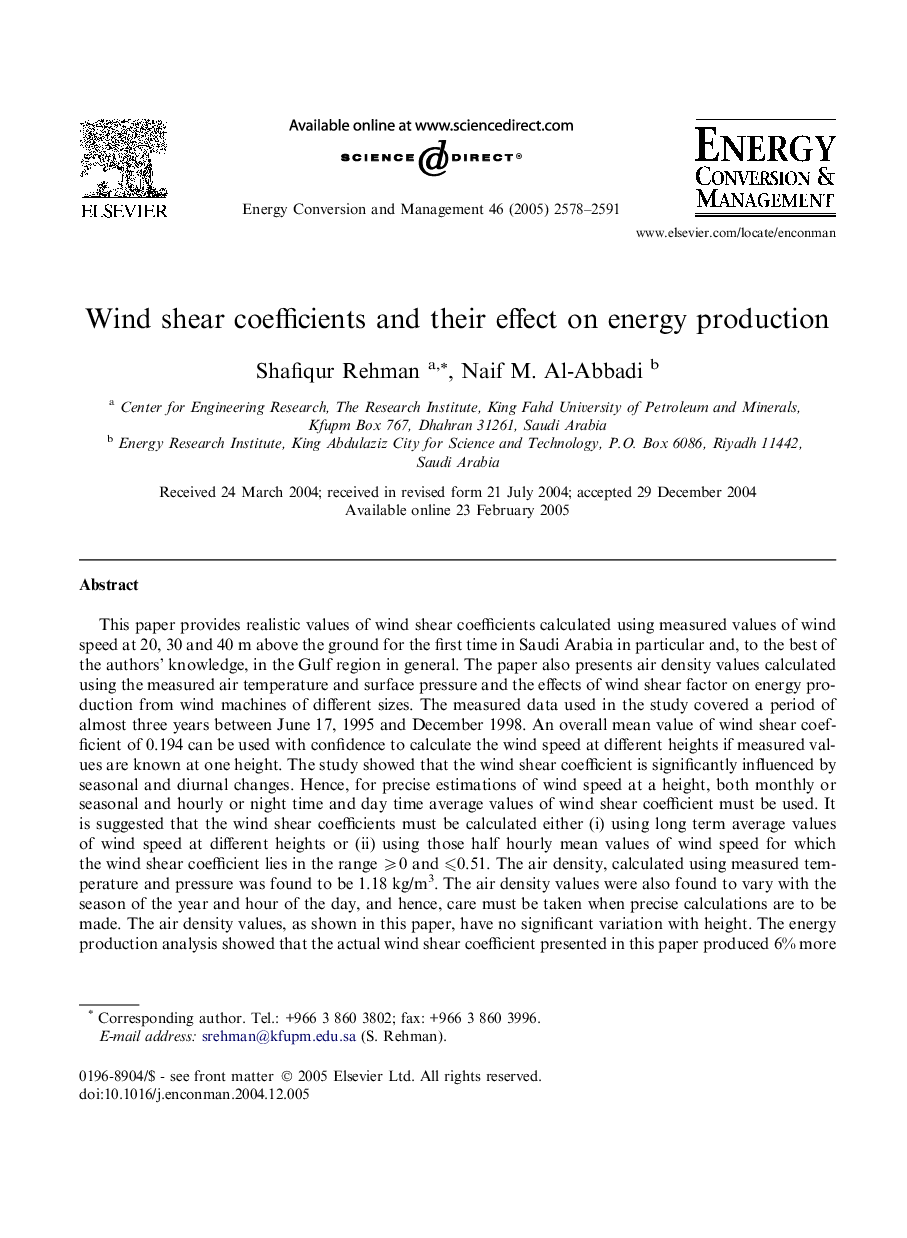| Article ID | Journal | Published Year | Pages | File Type |
|---|---|---|---|---|
| 762743 | Energy Conversion and Management | 2005 | 14 Pages |
This paper provides realistic values of wind shear coefficients calculated using measured values of wind speed at 20, 30 and 40 m above the ground for the first time in Saudi Arabia in particular and, to the best of the authors’ knowledge, in the Gulf region in general. The paper also presents air density values calculated using the measured air temperature and surface pressure and the effects of wind shear factor on energy production from wind machines of different sizes. The measured data used in the study covered a period of almost three years between June 17, 1995 and December 1998. An overall mean value of wind shear coefficient of 0.194 can be used with confidence to calculate the wind speed at different heights if measured values are known at one height. The study showed that the wind shear coefficient is significantly influenced by seasonal and diurnal changes. Hence, for precise estimations of wind speed at a height, both monthly or seasonal and hourly or night time and day time average values of wind shear coefficient must be used. It is suggested that the wind shear coefficients must be calculated either (i) using long term average values of wind speed at different heights or (ii) using those half hourly mean values of wind speed for which the wind shear coefficient lies in the range ⩾0 and ⩽0.51. The air density, calculated using measured temperature and pressure was found to be 1.18 kg/m3. The air density values were also found to vary with the season of the year and hour of the day, and hence, care must be taken when precise calculations are to be made. The air density values, as shown in this paper, have no significant variation with height. The energy production analysis showed that the actual wind shear coefficient presented in this paper produced 6% more energy compared to that obtained using the 1/7 power law. Similarly, higher plant capacity factors were obtained with the wind shear factor of 0.194 compared to that with 0.143.
